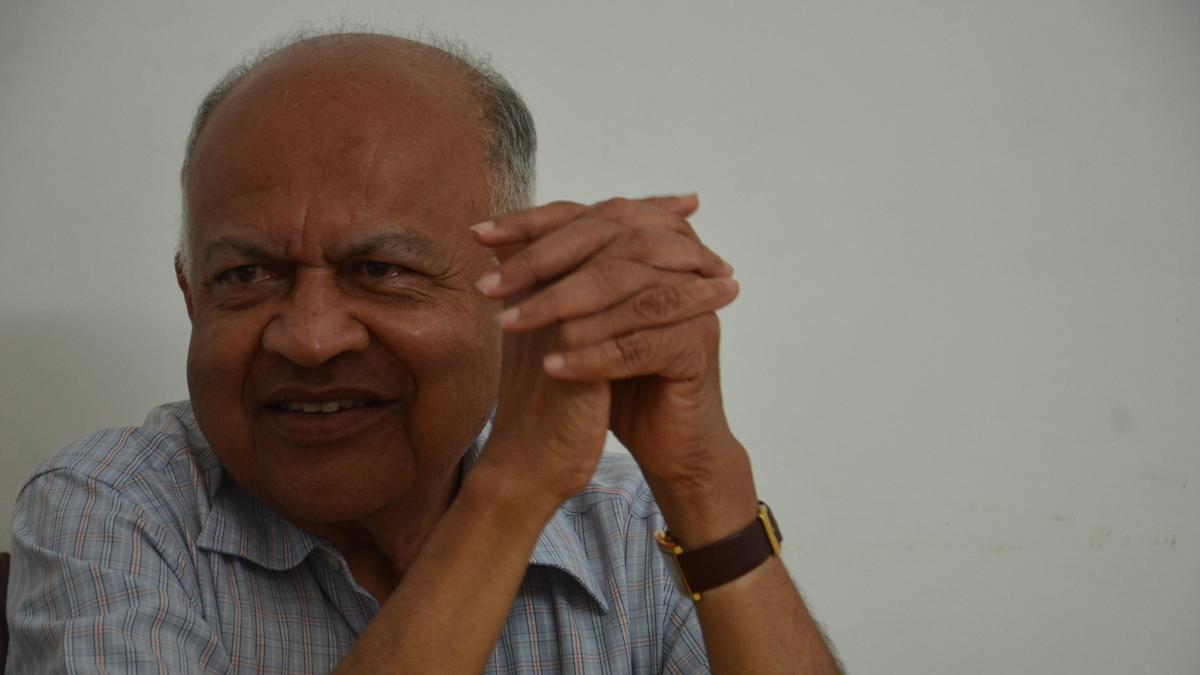Technology
Take part in ‘Bodh Gaya liberation movement’ in Delhi in large numbers: Monk
Bhante Vinachayra , a monk who leads the Mahabodhi Mahavihara Mukti Andolan, has appealed to the people of the State to participate in large numbers in ‘Bodh Gaya liberation movement’ to be held in Delhi on February 12, 2026, demanding that the government repeal the BT Act 1949 and hand over the Mahabodhi temple to Buddhist management.
He was addressing a gathering at Dhamma-Dhwaj Panchasheel Dhamma Yatra conference here on Saturday.
Bhante Vinacharya said that the fight for Mahabodhi was the fight for liberation and justice. It was the fight against brahmanism whose fundamental principles of inequality and discrimination directly posed a threat to the peaceful and equal societies that Buddhism tried to cultivate.
Claiming that after Christianity and Islam, Buddhism was the world’s third largest religion, the monk said that unfortunately the Bodhi temple — one of Buddhism’s holiest sites — was managed by a committee that included members from Buddhist and Hindu faiths.
Highlighting the uniqueness of the Bodh Gaya, Bhante Vinacharya said that the famous religious structures were solely identified either with the birth or death of saints or holy figures, whereas the Bodh Gaya was the sacred place where Gautama Buddha attained enlightenment after meditating for six years continuously under the Bodhi tree.
Recalling the traces of the Bodhi temple liberation movement, the monk said that the fight to “liberate Bodh Gaya from other faiths” campaign was led by Anagarika Dhammapala, a Sri Lankan Buddhist, in 1891. Later Devapriya Valisinha led the Bodhi temple liberation campaign under the aegis of Mahabodhi Society.
During this period, he claimed that the Buddhist population was very negligible in Maharashtra, Uttar Pradesh and Bihar, while they were small but significant in States such as Karnataka, Odisha and West Bengal. He also lauded the contributions made by the Buddhists from Karnataka during the movement at its initial stage.
He said Mahabodhi was the continuous thread in the history of Buddhism not only in India but throughout the Buddhist world.
Mauryan emperor Ashoka adopted Buddhism in 263 BCE after the Kalinga war and Babasaheb Ambedkar embraced Buddhism in a ceremony called Dhamma Deeksha at Nagpur on October 14, 1956.
Bhante Vinacharya appealed to Buddhists and followers of Ambedkar to join the Bodhi temple liberation movement in Delhi on February 12, 2026. “We need to foster solidarity among Buddhists throughout India for this cause,” he said.
Bhante Payyananda from Latur, Maharashtra, Bhante Amarjyothi from Belamagi Buddha Vihar, Bhante Vara Jyothi from Anadur Buddha Vihar, Bhante Yash from Solapur, Bhante Dhamma Deepa and Bhante Sangharakshith from Bidar were present.
Bhante Vinachayra , a monk who leads the Mahabodhi Mahavihara Mukti Andolan, has appealed to the people of the State to participate in large numbers in ‘Bodh Gaya liberation movement’ to be held in Delhi on February 12, 2026, demanding that the government repeal the BT Act 1949 and hand over the Mahabodhi temple to Buddhist management.
He was addressing a gathering at Dhamma-Dhwaj Panchasheel Dhamma Yatra conference here on Saturday.
Bhante Vinacharya said that the fight for Mahabodhi was the fight for liberation and justice. It was the fight against brahmanism whose fundamental principles of inequality and discrimination directly posed a threat to the peaceful and equal societies that Buddhism tried to cultivate.
Claiming that after Christianity and Islam, Buddhism was the world’s third largest religion, the monk said that unfortunately the Bodhi temple — one of Buddhism’s holiest sites — was managed by a committee that included members from Buddhist and Hindu faiths.
Highlighting the uniqueness of the Bodh Gaya, Bhante Vinacharya said that the famous religious structures were solely identified either with the birth or death of saints or holy figures, whereas the Bodh Gaya was the sacred place where Gautama Buddha attained enlightenment after meditating for six years continuously under the Bodhi tree.
Recalling the traces of the Bodhi temple liberation movement, the monk said that the fight to “liberate Bodh Gaya from other faiths” campaign was led by Anagarika Dhammapala, a Sri Lankan Buddhist, in 1891. Later Devapriya Valisinha led the Bodhi temple liberation campaign under the aegis of Mahabodhi Society.
During this period, he claimed that the Buddhist population was very negligible in Maharashtra, Uttar Pradesh and Bihar, while they were small but significant in States such as Karnataka, Odisha and West Bengal. He also lauded the contributions made by the Buddhists from Karnataka during the movement at its initial stage.
He said Mahabodhi was the continuous thread in the history of Buddhism not only in India but throughout the Buddhist world.
Mauryan emperor Ashoka adopted Buddhism in 263 BCE after the Kalinga war and Babasaheb Ambedkar embraced Buddhism in a ceremony called Dhamma Deeksha at Nagpur on October 14, 1956.
Bhante Vinacharya appealed to Buddhists and followers of Ambedkar to join the Bodhi temple liberation movement in Delhi on February 12, 2026. “We need to foster solidarity among Buddhists throughout India for this cause,” he said.
Bhante Payyananda from Latur, Maharashtra, Bhante Amarjyothi from Belamagi Buddha Vihar, Bhante Vara Jyothi from Anadur Buddha Vihar, Bhante Yash from Solapur, Bhante Dhamma Deepa and Bhante Sangharakshith from Bidar were present.

